GAT 039 Brett Littman
Isamu Noguchi:The In-Between: Part 3
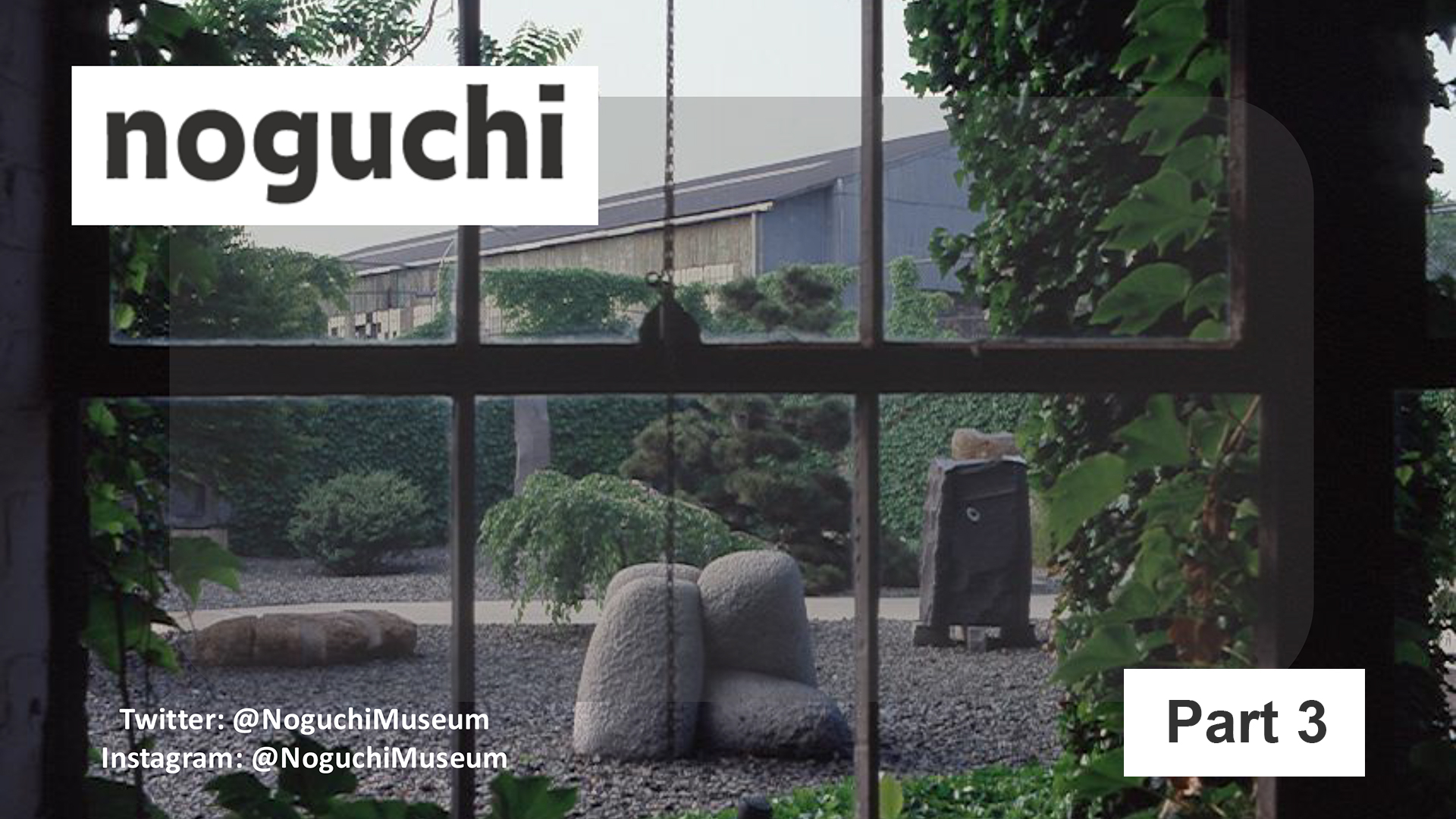
Isamu Noguchi (1904–1988) is regarded as one of the most important sculptors of the 20th century. Brett Littman, who served as Director of The Isamu Noguchi Foundation and Garden Museum from 2018 to 2023, offers an interpretive framework that reads Noguchi’s practice through the concept of “The In-Between.” The following is an excerpt from a talk held on April 18, 2023.
Edited by Ishii Jun’ichiro (ICA Kyoto)
to the “Isamu Noguchi:The In-Between: Part 1”
to the “Isamu Noguchi:The In-Between: Part 2“
Part 3: Public work and outdoor projects
The last two things I want to talk about are Noguchi’s playgrounds, and his essentially site-specific land artwork or outdoor sculpture projects.
The idea of play and his Play sculptures were something that Noguchi started to think about as early as the late 1930s.
Noguchi was only able to complete three playgrounds in his lifetime, but he made proposals for probably more than 10 or 20 playgrounds. The first proposal from 1939 actually was for the Dole Corporation and would have been located in Hawaii. The second one is probably the most famous, which is the «Contoured playground» from 1941, which he proposed to Robert Moses and was summarily rejected by Robert Moses, who really did not like Noguchi at all, and continued to reject his work in New York for many years to come.
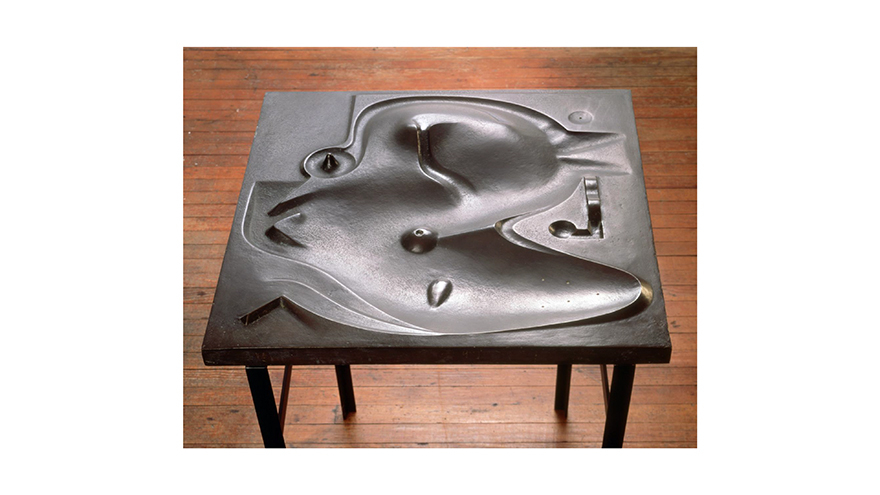
«Contoured playground» 1941
Photo courtesy of The Isamu Noguchi Foundation and Garden Museum
The actual «Play Sculpture», something that was made and placed and continues to be made today. This was originally made in 1965 and slightly redesigned in 1980, in an unlimited edition that is still produced today.
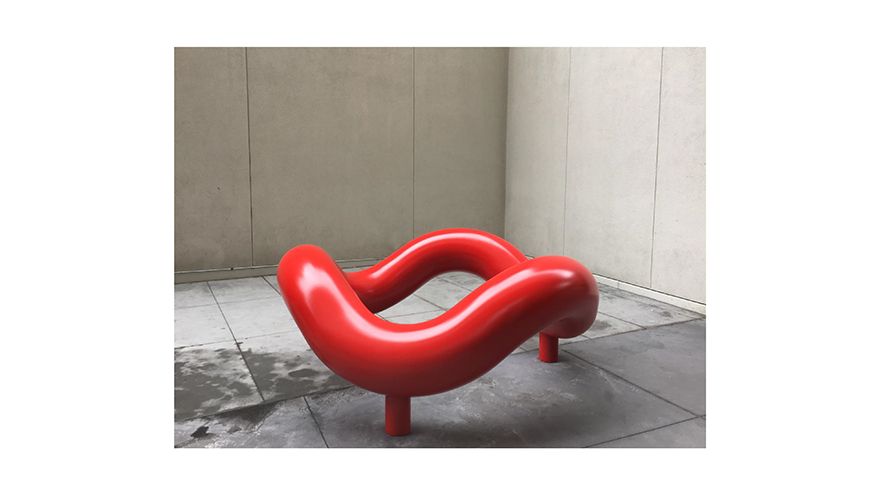
«Play Sculpture» 1965-1980
Photo courtesy of The Isamu Noguchi Foundation and Garden Museum
This piece is made out of sewer plumbing pipes elbows, and we still buy these large pipes from sewer/plumbing supply stores. Then they’re welded together. Noguchi was using really kind of basic industrial material, you know, that we use in the urban infrastructure.
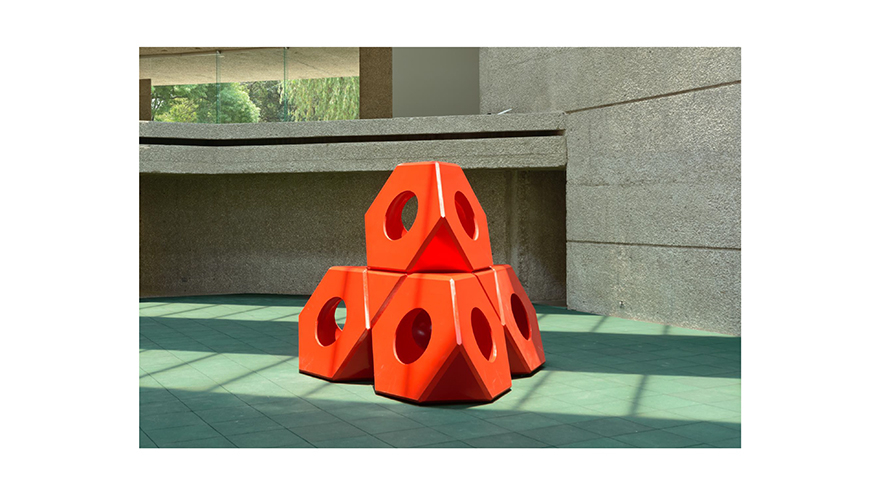
«Octetra» 1965-1966
Photo courtesy of The Isamu Noguchi Foundation and Garden Museum
«Octetra», still in production, started in 1965-66.
I’ll show you some pictures that I took in «Moerenuma» in 2018.
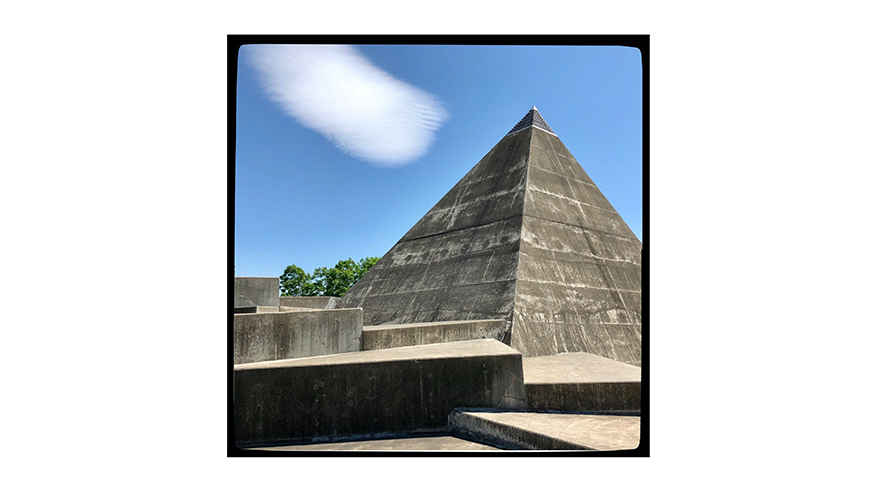
«Moerenuma» 2005
Photo by Brett Littman
The very large Noguchi playground finished after he died, and it is about half the size of Central Park with eight unique playgrounds and a giant fountain and a huge play mountain as well. It’s a pretty unbelievable sight, and really looking a little bit sad these days. I hope they can kind of renovate it, but probably the largest Noguchi playground that will ever be made in the world.
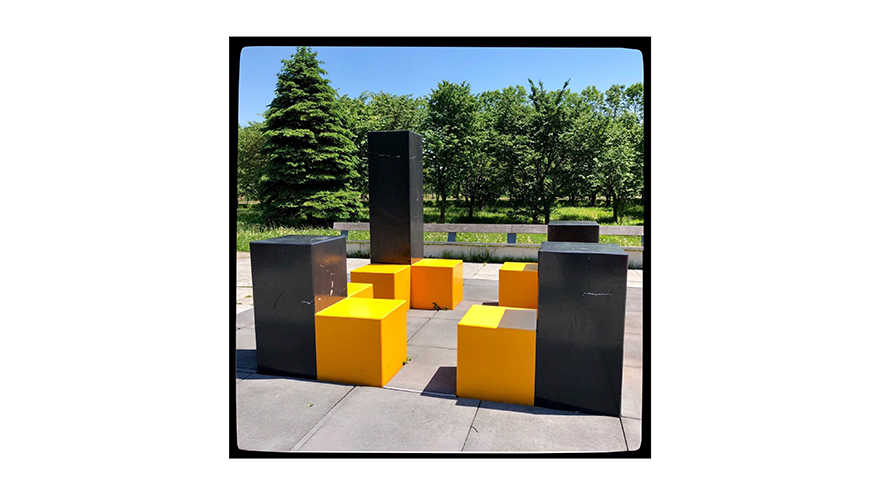
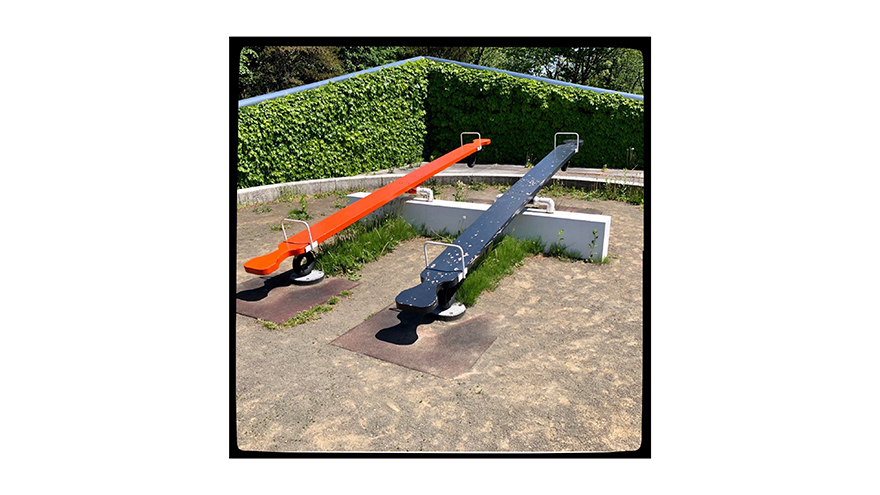
«Moerenuma» 2005
Photo by Brett Littman
Noguchi was very interested in the social dimension of what sculpture can do and how it can bring people together. I think that the public works are in a way the synthesis of a lot of his thinking over a long period of time.
Noguchi’s first public work was called «History of Mexico» (1936) and still exists in a fruit market in Mexico City. This piece was looking at the history of Mexico through the lens of politics, also created during the time that Noguchi was having an affair with Frida Kahlo.
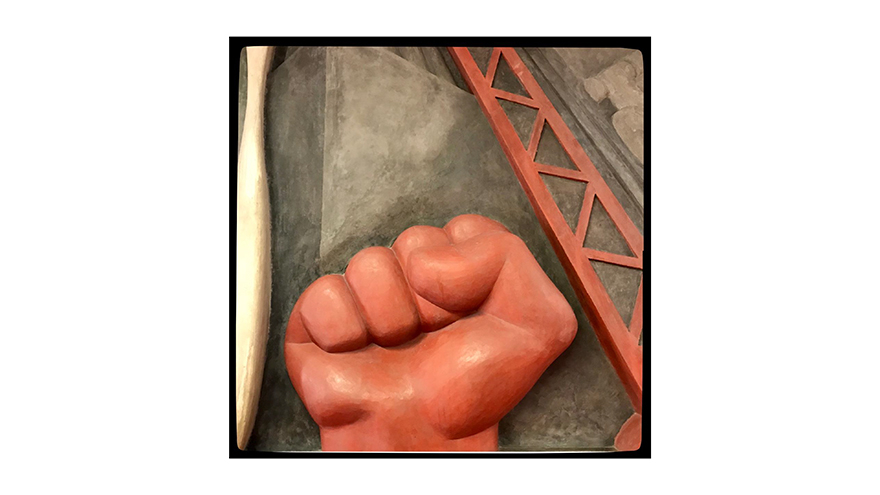
«History Mexico» 1936
Photo courtesy of The Isamu Noguchi Foundation and Garden Museum
There’s a very famous photo of Frida Kahlo at the site of the «History of Mexico», which is a very interesting picture. It also is one of the earliest pieces of visual art that includes a swastika as an anti-fascist statement. Maybe only George Grosz, the German artist, used it earlier than Noguchi. But it’s quite interesting and very powerful to see that in this relief in Mexico City in 1936.
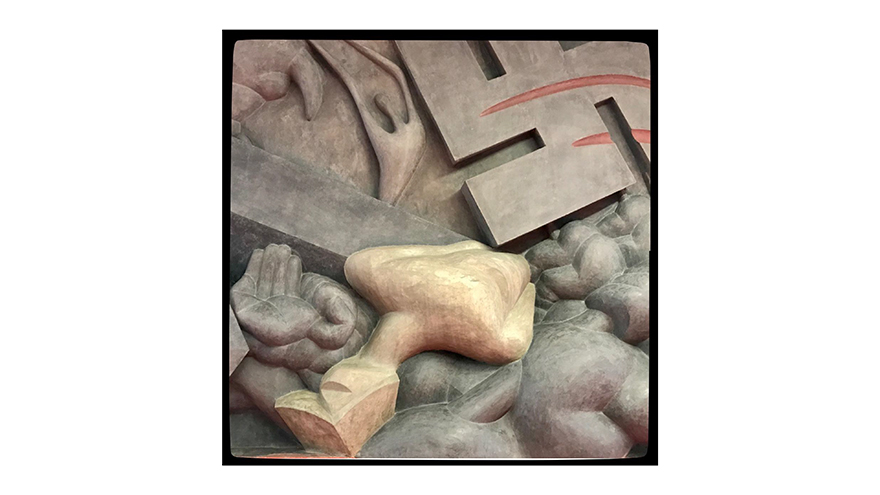
«History Mexico» 1936
Photo courtesy of The Isamu Noguchi Foundation and Garden Museum
A very important piece for Noguchi, «News», which is the first permanent installation that he had in New York City at Rockefeller Center, still at Rockefeller Center. I would say millions of people pass this every day, and no one has an idea that this is an Isamu Noguchi piece.
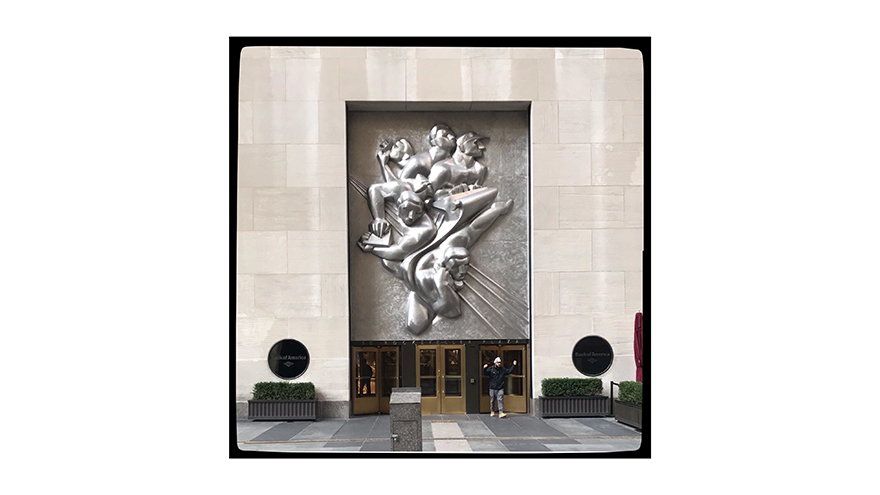
«News» 1938-1940
Photo courtesy of The Isamu Noguchi Foundation and Garden Museum
Officially, Noguchi’s first public sculpture in New York City was at the 1939-1940 World’s Fair, and it was the «Ford Fountain». Sadly, it was dismantled and destroyed. But this was the first project that he was able to actually do in the public sphere in New York City.
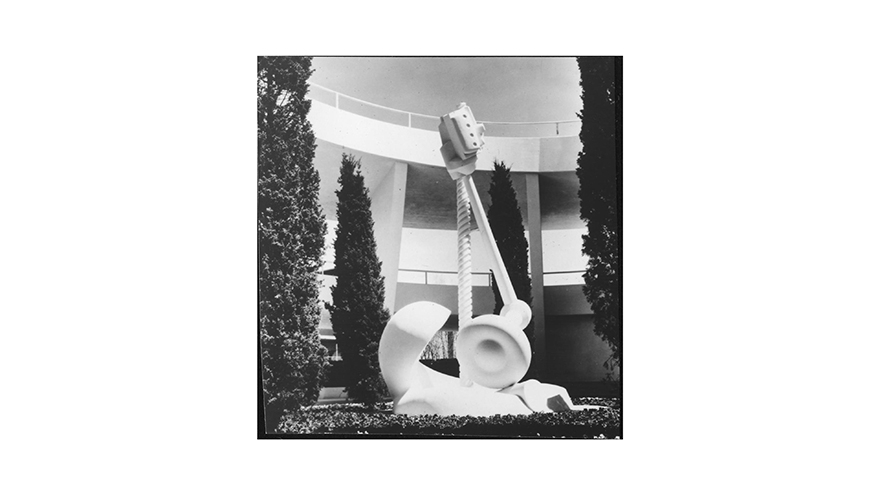
«Gardens for UNESCO» 1956-1958
Photo courtesy of The Isamu Noguchi Foundation and Garden Museum
I’ll just quickly run through a couple of more projects, outdoor projects.

«Ford Fountain» 1939-1940
Photo courtesy of The Isamu Noguchi Foundation and Garden Museum
The «UNESCO Garden», The «Japanese Garden», commissioned by Marcel Breuer in 1956, probably one of the most important Noguchi projects and also the culmination of his time in Kyoto with Saburo Hasegawa talking about garden design in 1950-1951. He was able to execute all of the ideas that he wants to put into play, and it is, I would say, the kind of prototype for our museum and for a lot of the other projects that he does in the decades to come.
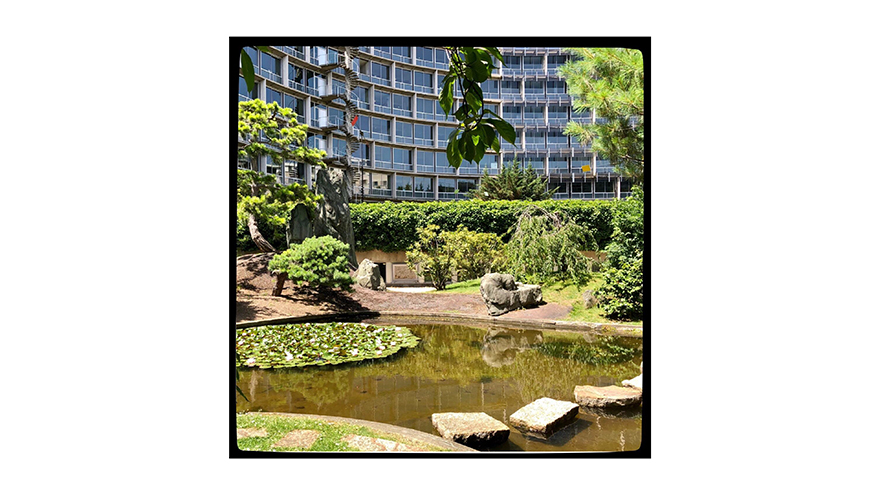
«Gardens for UNESCO» 1956-1958
Photo by Brett Littman
These are some photos that I took recently at UNESCO. I mean, the problem with a lot of the Noguchi outdoor projects, there are 49 of them that the museum does not own. Many of them are now becoming endangered species and in very bad condition. It’s quite depressing, and some of them are actually in danger of being totally ripped up and destroyed.
I’m spending more and more time trying to protect these things and making sure that they will survive hopefully for another 50 or a 100 years.
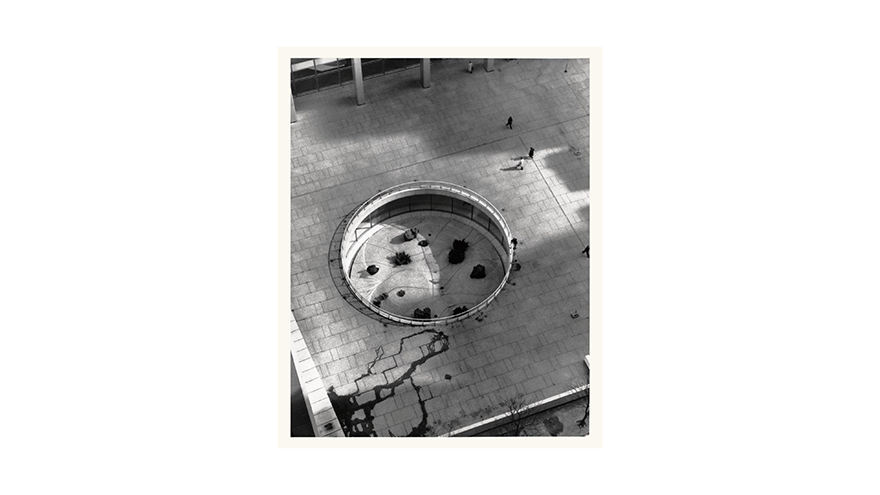
«Sunken Garden» 1961-1964
Photo courtesy of The Isamu Noguchi Foundation and Garden Museum
The «Sunken Garden» 1961-1964, at the Beinecke Library, commissioned by Bunshaft, an architect that Noguchi worked with several times.
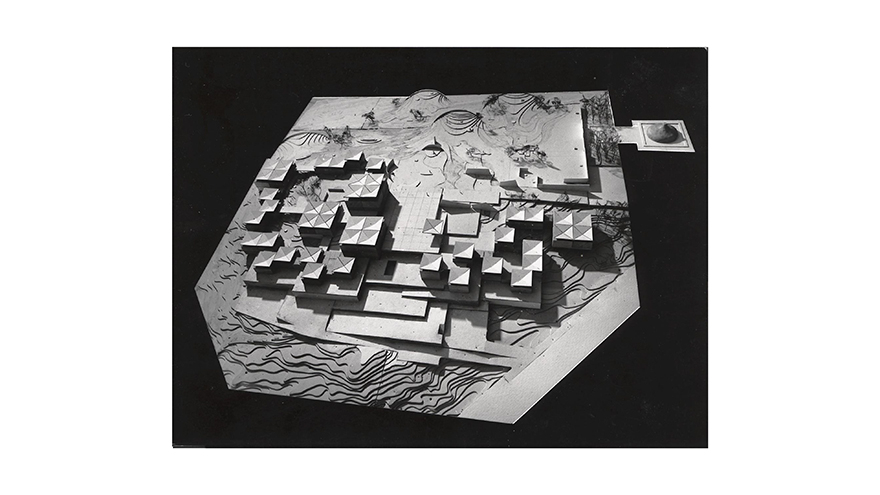
«Billy Rose Sculpture Garden Jerusalem» 1960-1965
Photo courtesy of The Isamu Noguchi Foundation and Garden Museum
The Model of the «Billy Rose Sculpture Garden» done for the Jerusalem Museum, 1960-1965.
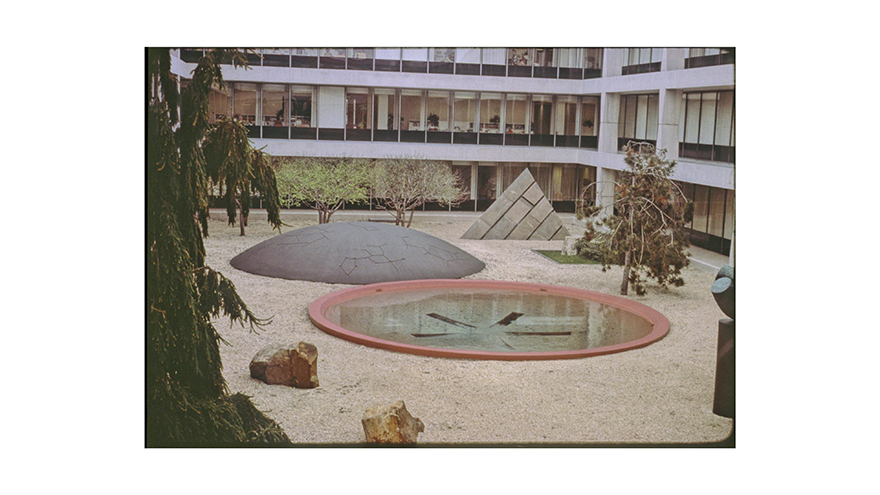
«Gardens at the IBM Headquarters» 1964
Photo courtesy of The Isamu Noguchi Foundation and Garden Museum
The «Gardens at the IBM Headquarters» in Armonk, New York, still exist. They’re quite incredible, but they’re in very bad shape.
I’m going to end with what is probably the holy grail of all the Noguchi pieces, one in Tokyo, in the basement of the Supreme Court.
I’m the only person in the museum that has seen it since 1974 because it is impossible to get into the Supreme Court. It basically was designed for judges to go downstairs and meditate before they had to make an important decision.

«Supreme Court Fountains» 1974
Photo courtesy of The Isamu Noguchi Foundation and Garden Museum
There are five and a half wells, two and a half on one side and two and a half on another side. Essentially, it was a space in which you were supposed to kind of go down and meditate.
It is in an air shaft at the bottom of the Supreme Court building, which is a brutalist kind of building, you know, which you probably have seen driving by if you’re driving by the Imperial Garden in Tokyo. But it’s in the most unusual space.
Sadly, very few people today are going there and using it. When I went, I was the first person in five years to have the door opened.
Thank you for indulging me and allowing me to do the full presentation. I hope that this has given you a more full understanding of Isamu Noguchi’s practice.
And that when you leave the lecture, you’ll really see how complex and how diverse Noguchi was in terms of approaching the idea of what sculpture can be and how it also operates in the world in the social dimension as well.
Brett Littman
Brett Littman held the position of Director at the Isamu Noguchi Foundation and Garden Museum in Long Island City, New York from May 2018 until June 2023. He was Executive Director of The Drawing Center from 2007–2018; Deputy Director of MoMA PS1 from 2003–2007; Co-Director of Dieu Donné Papermill from 2001–2003 and Associate Director of Urban Glass from 1996–2001.
Littman’s interests are multi-disciplinary: he has overseen more than 150 exhibitions and personally curated more than thirty exhibitions over the last 16 years, dealing with visual art, outsider art, craft, design, architecture, poetry, music, science, and literature. He was named the curator of Frieze Sculpture at Rockefeller Center for 2019 and 2020, is an art critic and lecturer and an active essayist for museum and gallery catalogues, in addition to writing articles for a wide range of U.S. and international art, fashion, and design magazines.
A native New Yorker, Brett Littman received a Chevalier of the Order of Arts and Letters from France in 2017 and his B.A. in Philosophy from the University of California, San Diego.
* This talk was held at the Kyoto University of Arts on April 18, 2023.